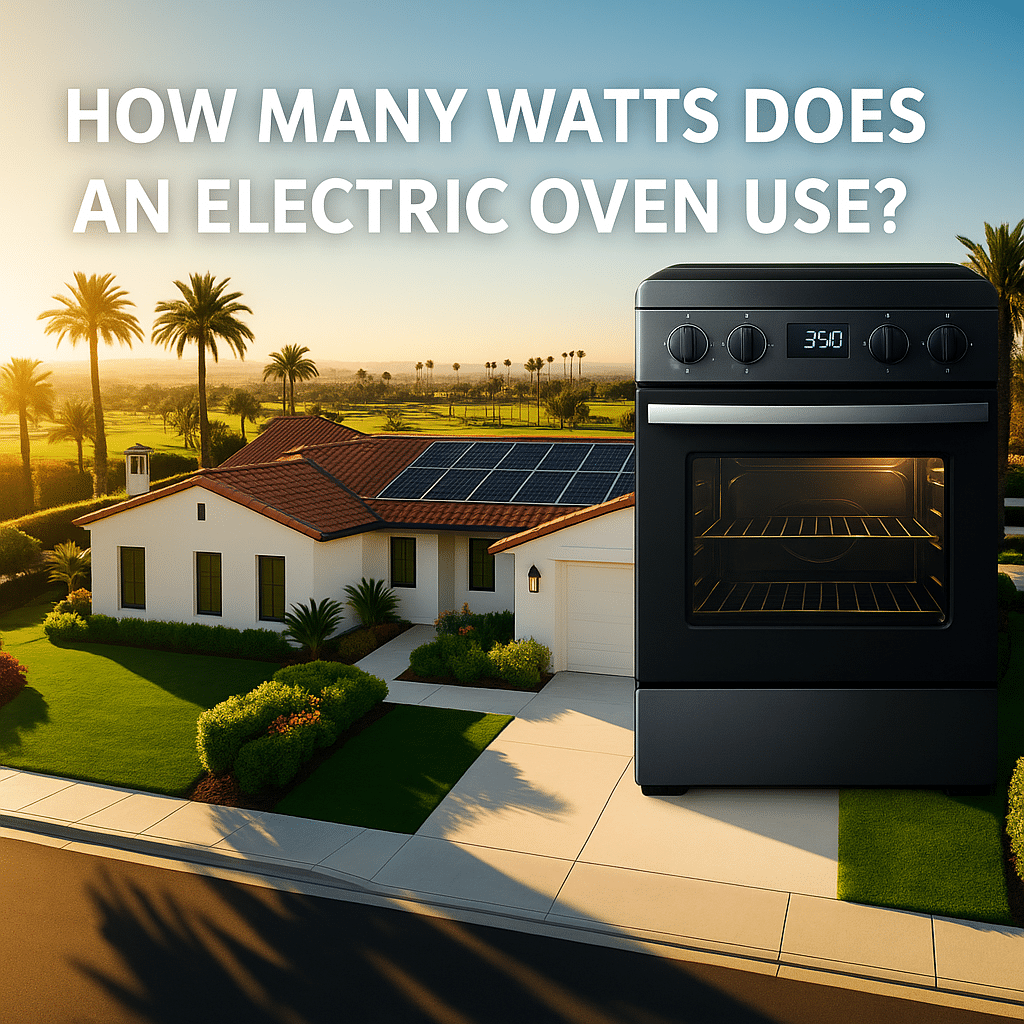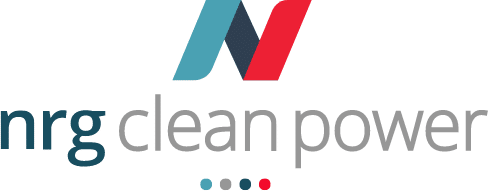
Electric ovens are one of the most power-hungry appliances in a modern kitchen, especially if you love to bake or roast frequently. But how much energy are they really using? And how does that usage factor into a solar setup?
In this guide, we’ll cover average wattage ranges, real model comparisons, how long ovens run, and what solar users need to know, all with up-to-date 2025 data.

Average Electric Oven Wattage in 2025
Electric ovens typically draw between 2,000 and 5,000 watts when heating. The actual energy use depends on:
- The size of the oven
- Whether you’re using convection or standard baking
- How long are the heating elements active
- Whether the stove and oven share circuits (ranges)
| Oven Type | Typical Power Range | Average Hourly Usage | Energy Star Certified? |
|---|---|---|---|
| Standard Electric Oven | 2,000–5,000 W | ~2.5 kWh/hr | No |
| Convection Oven | 1,800–3,000 W | ~2.0 kWh/hr | No |
| Wall Oven (Single) | 2,200–3,600 W | ~2.2–2.8 kWh/hr | Rarely |
| Wall Oven (Double) | 4,000–7,000 W (total) | ~4.5 kWh/hr (both active) | Rarely |
| Portable Countertop Oven | 1,000–1,800 W | ~1.2 kWh/hr | Sometimes |
| Air Fryer/Toaster Oven Combo | 1,200–1,600 W | ~0.6–1.0 kWh/hr | Often |
⚠️ Note: Electric ovens cycle their heating elements on and off. Even though the wattage may be high, they’re not drawing max watts continuously.
How Much Does It Cost to Run an Oven?
Here’s the average energy cost for a typical 3,000-watt oven:
- Usage Time: 1 hour of baking
- Electricity Rate: $0.17 per kWh (U.S. average)
- Energy Used: ~2.5–3.0 kWh
- Total Cost: $0.43–$0.51 per hour
For a roast dinner or holiday turkey, which may require 2–3 hours of use, you’re looking at $1.00–$1.50 per cooking session.
Solar Setup: Can You Run an Oven on Solar Power?
Technically, yes — but electric ovens are among the hardest appliances to power off-grid or during backup mode due to their:
- High Wattage Draw – Often >3,000W
- Long Runtime – Many meals take over an hour
- Short-Term Spikes – Heating elements pulse to maintain the temperature
Here’s What You’d Need:
Example: Running a 3,000W oven for 1.5 hours
- Total Energy Used: 4.5 kWh
- Solar Panels Required: 1,200W to 1,500W array (assuming 5 sun hours)
- Battery Storage Required: 4.5–6.0 kWh (plus inverter with 3kW+ continuous output)
⚠️ Important for Off-Grid Homes: Many solar systems prioritize essential loads (like refrigerators and lights). Running an electric oven regularly would require a large, dedicated setup.
New in 2025: Trends in Oven Efficiency
While electric ovens don’t carry ENERGY STAR ratings like refrigerators or dishwashers, there have still been notable changes in design:
- More Convection Options – These circulate hot air and use up to 20% less energy
- Smart Preheat Control – Adaptive logic learns your cooking habits
- Air Fry + Multi-Function Devices – Smaller units like Breville and Ninja are replacing full oven cycles for everyday meals
- Induction Ranges with Ovens – While the oven part is standard, paired cooktops use much less energy than resistance coils
Real-World 2025 Oven Models: Wattage & Energy Use
| Model | Type | Max Wattage | Est. kWh/hr | Daily Cost (1hr use @ $0.17/kWh) |
|---|---|---|---|---|
| GE JB735SPSS (Electric Range) | Standard + Bake | 3,000–3,500 W | ~2.8 kWh | ~$0.48 |
| Samsung NV51T5511SS Wall Oven | Convection Wall | 3,000 W | ~2.4 kWh | ~$0.41 |
| Breville Smart Oven Air Fryer | Countertop Combo | 1,800 W | ~1.1 kWh | ~$0.19 |
| Ninja Foodi XL Pro Air Oven | Compact Convection | 1,500 W | ~0.9 kWh | ~$0.15 |
Disclaimer: Wattage data is sourced from manufacturer documentation and may vary depending on actual usage, preheating time, and oven settings.
How to Check Your Oven’s Wattage
Here are the easiest ways to find how much power your oven uses:
- Look Inside the Door Frame or Rear Panel – Voltage and Amperage are listed
- Watts = Volts × Amps
- Check the User Manual – Manufacturers often list wattage ranges for bake, broil, and convection modes
- Use a Smart Circuit Monitor – Devices like Sense or Emporia Vue can monitor hardwired appliances through your panel
- Power Meter (for Portable Ovens) – Plug into a Kill-A-Watt to measure draw
Tips to Reduce Oven Energy Usage
- Use Convection Mode – Cooks faster and uses lower temps
- Avoid Preheating When Not Needed – Many meals don’t require a hot oven start
- Batch Cooking – Maximize use per session by prepping multiple meals
- Don’t Open the Door – Heat loss = longer cooking cycles
- Use Smaller Appliances When Possible – Toaster ovens, air fryers, and slow cookers use far less energy
Final Thoughts for Solar-Powered Households
Electric ovens can be one of the biggest power draws in your home, especially if you’re trying to operate off-grid or during limited-supply hours. While they can be part of a solar-powered home, most people will want to:
- Use them during peak sun hours
- Pair them with a strong inverter and battery setup
- Supplement cooking with low-wattage alternatives (induction, microwave, slow cooker)
The good news? Newer ovens and smarter kitchen tools make it easier than ever to cook efficiently — even if you’re chasing net-zero goals.

